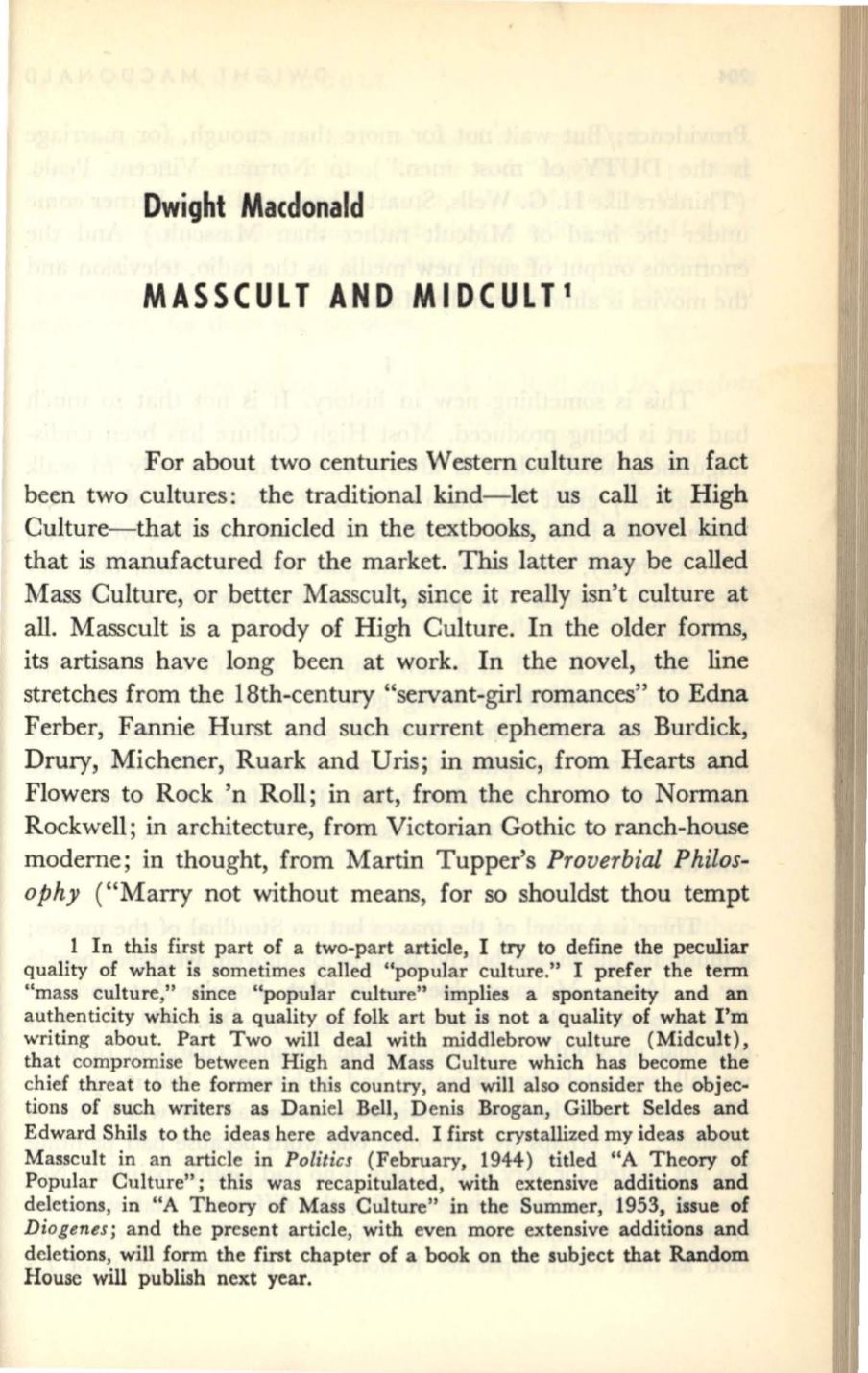
Dwight Macdonald
MASSCULT AND MIDCULTI
For about two centuries Western culture has in fact
been two cultures: the traditional kind-let us call it High
Culture-that is chronicled
in
the textbooks, and a novel kind
that
is
manufactured for the market. This latter may be called
Mass Culture, or better Masscult, since it really isn't culture at
all. Masscult
is
a parody of High Culture. In the older forms,
its artisans have long been at work. In the novel, the line
stretches from the 18th-century "servant-girl romances" to Edna
Ferber, Fannie Hurst and such current ephemera as Burdick,
Drury, Michener, Ruark and Uris;
in
music, from Hearts and
Flowers to Rock 'n Roll; in art, from the chromo to Norman
Rockwell; in architecture, from Victorian Gothic to ranch-house
moderne; in thought, from Martin Tupper's
Proverbial Philos–
ophy
("Marry not without means, for so shouldst thou tempt
1 In this first part of a two-part article, I try to define the peculiar
quality of what is sometimes called "popular culture." I prefer the term
"mass culture," since "popular culture" implies a spontaneity and an
authenticity which is a quality of folk art but is not a quality of what I'm
writing about. Part Two will deal with middlebrow culture (Midcult),
that compromise between High and Mass Culture which has become the
chief threat to the former in this country, and will also consider the objec–
tions of such writers as Daniel Bell, Denis Brogan, Gilbert SeIdes and
Edward Shils to the ideas here advanced. I first crystallized my ideas about
Masscult in an article in
Politics
(February, 1944) titled "A Theory of
Popular Culture"; this was recapitulated, with extensive additions and
deletions, in "A Theory of Mass Culture" in the Summer, 1953, issue of
Diogenes;
and the present article, with even more extensive additions and
deletions, will form the first chapter of a book on the subject that Random
House will publish next year.


